|
Nakajima Ki-115 Tsurugi
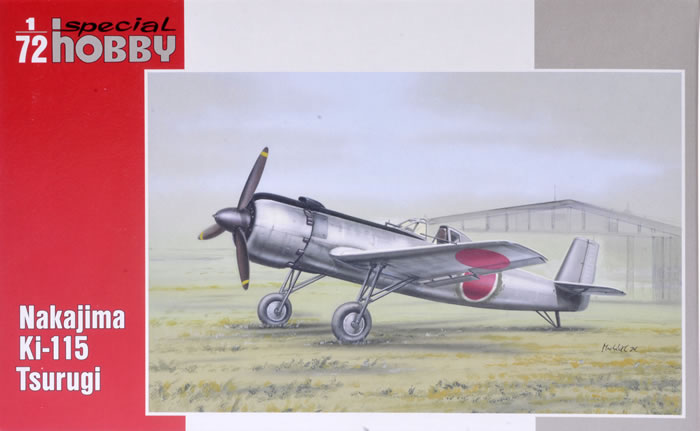
Special Hobby, 1/72 scale
S u m m a r y : |
Catalogue Number: |
Special Hobby Kit Nos.
SH72198 – Nakajima Ki-115 Tsurugi
SH72199 – Nakajima Ki-115 Tsurugi "Battle of Tokyo" |
Scale: |
1/72 |
Contents & Media |
Each kit contains 46 parts in grey plastic, two parts in clear plastic; 16 resin parts, one photo-etched fret with 20 parts, a printed acetate film for the instrument panel and markings for three options. |
Price: |
Available on-line from these stockists:
Click here for currency conversion |
Review Type: |
First Look. |
Advantages: |
Cleanly moulded; good level of detail; crisp recessed surface textures. |
Disadvantages: |
Limited run nature (lack of locating pins etc.) and cleanup of parts will require a bit of focus. |
Conclusion: |
Both of Special Hobby's 1/72 scale Ki-115 Tsurugis are well detailed, cleanly moulded, feature subtle surface features, makes effective use of resin and photo-etch and if you have a few kits under your belt you won't have much trouble with the absence of locating pins.
Just take your time aligning parts, test-fit frequently, and you'll have an attractive result.
Recommended. |
Reviewed by Brett Green

Special Hobby’s 1/72 Ki-115 Tsurugi is available online from Squadron.com
The Nakajima Ki-115 Tsurugi was a one-man kamikaze aircraft developed by the Imperial Japanese Army Air Force in the closing stages of World War II in 1945. The Imperial Japanese Navy called this aircraft T?ka.
The aircraft's intended purpose was to be used in kamikaze attacks on Allied shipping and the invasion fleet expected to be involved in the invasion of Japan, Operation Downfall, which in the end did not take place. Because the Japanese High Command thought that Japan did not have enough obsolete aircraft to use for kamikaze attacks, it was decided that huge numbers of cheap, simple suicide planes should be constructed quickly in anticipation of the invasion of Japan.
The aircraft was very simple, being made from "non-strategic" materials (mainly wood and steel). To save weight, it was to use a jettison-able undercarriage (there was to be no landing), so a simple welded steel tube undercarriage was attached to the aircraft. This, however, was found to give unmanageable ground-handling characteristics, so a simple shock absorber was then incorporated. The cross section of the fuselage was circular and not elliptical as were most planes of this size and type; such a fuselage was easier to make.
Tsurugi had an instrument panel with some flight instruments; rudder pedals in addition to joystick type control column, and also a place for a radio. Flight controls included both ailerons and elevators and (in production versions) flaps.
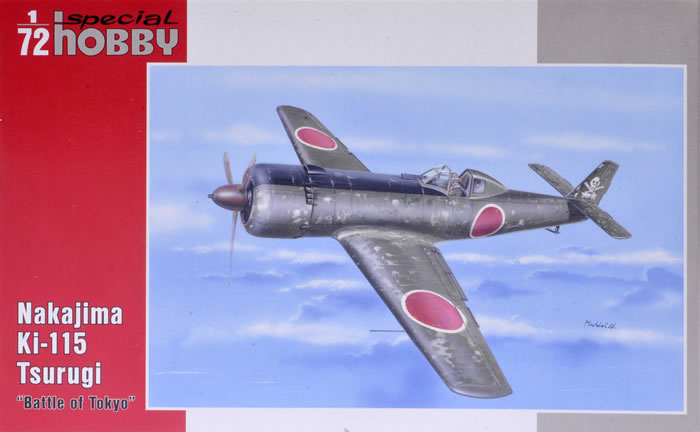
The Ki-115 was designed to be able to use any engine that was in storage for ease of construction and supply, and to absorb Japan's stocks of obsolete engines from the 1920s and 1930s. The initial aircraft (Ki-115a) were powered by 858-kilowatt (1,151 hp) Nakajima Ha-35 radial engines. It is not known if any other engine was ever actually fitted.
After testing the first production aircraft were fitted with the improved undercarriage and two rocket units. These may have assisted with take-off or may have been designed for the final acceleration towards the target.
The aircraft had a top speed of 550 kilometres per hour (340 mph) and could carry a bomb weighing as much as 800 kilograms (1,800 lb), large enough to split a warship in two. However, it was otherwise unarmed, and heavily laden with its bomb, would have been an easy target for enemy fighter aircraft.
The controls were crude, the visibility terrible, and the performance abysmal. Tsurugi had very poor take-off and landing performance and could not be safely flown by anyone other than experienced pilots. There were fatal crashes during testing and training. However new, better versions with improved controls and better visibility were under intensive development. The Japanese High command had plans to construct some 8,000 per month in workshops all across Japan.
The war ended before any flew in combat. Individually, they would have been rather inefficient weapons, but used in waves of hundreds or thousands they could have been quite destructive.
Source: Wikipedia
Special Hobby has released two 1/72 scale Nakajima Ki-115 Tsurugi kits.
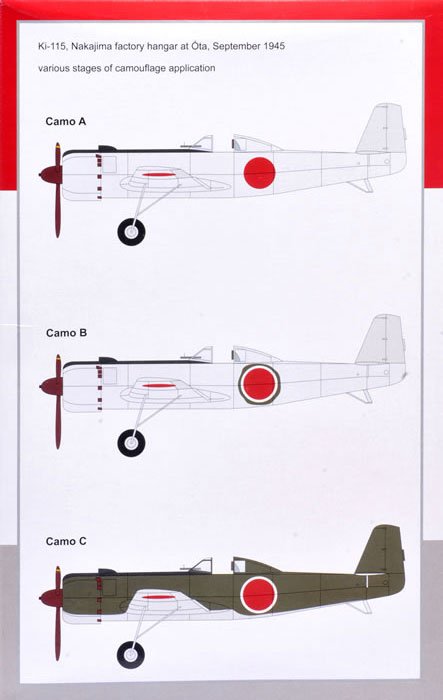
The first offers three stages of camouflage application for a machine from the Nakajima factory, with the second boxing featuring three "What If" schemes.
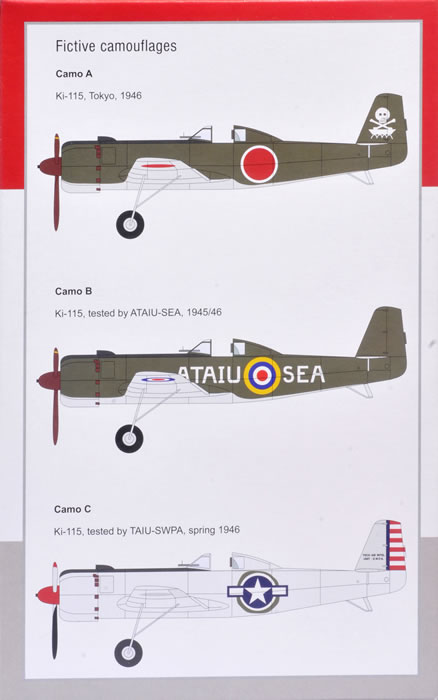
The kits are otherwise identical, with 46 parts in grey plastic, two parts in clear plastic; 16 resin parts, one photo-etched fret with 20 parts, and a printed acetate film for the instrument panel.
This is a good quality limited run kit. Although little luxuries such as fuselage locating pins are not present, the parts are cleanly moulded for the main part, and sprue attachments quite modest, so parts removal and cleanup will be fast and easy. You won't find the tall ejector pin towers that older limited run kits suffered from either!
Surface textures are subtly done, especially the crisply recessed panel lines, and trailing edges are nice and sharp.
Interior detail is simple, as it was in the rear aircraft, with mainly plastic parts. The instrument panel, harness straps and other small details are covered on the brass photo-etched fret.
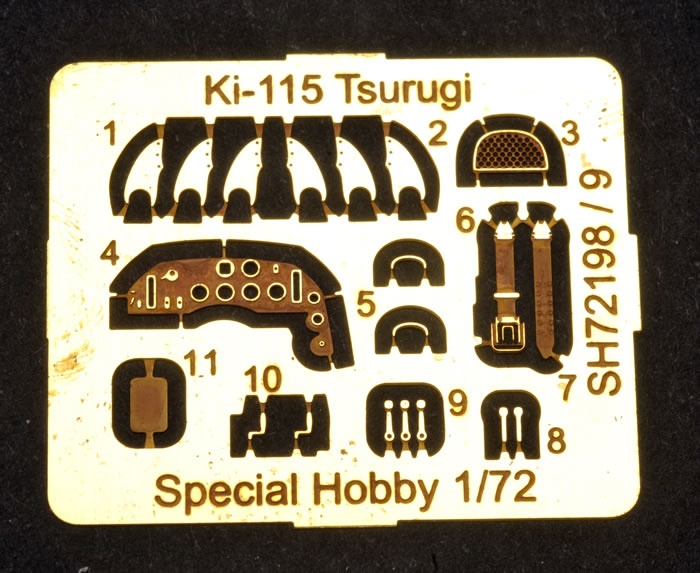
Resin parts are supplied for the engine, exhaust stubs, pilot's headrest and bomb.
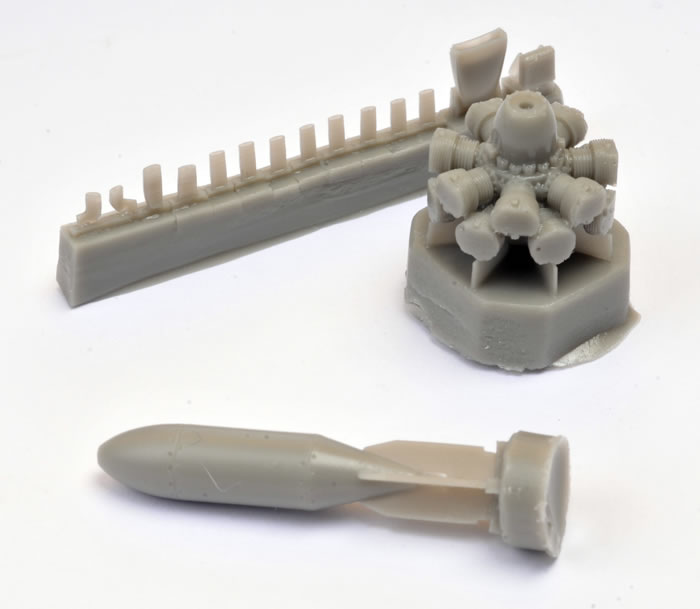
The canopy is provided as a separate windscreen and sliding section, so it may be posed open or closed. The transparencies and clear and quite thin.
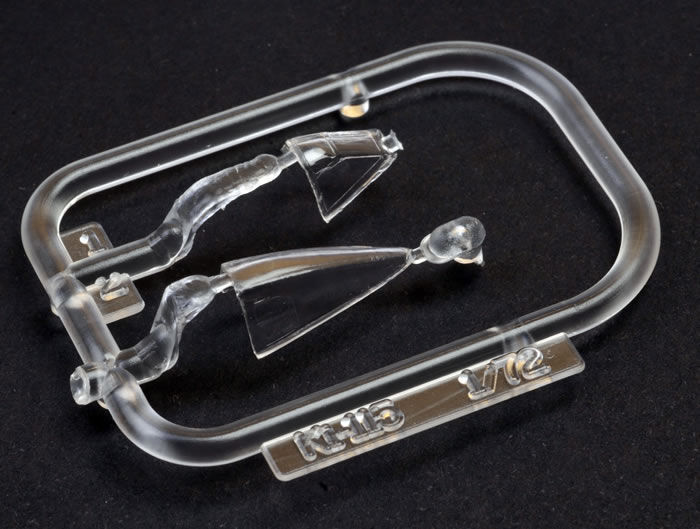
SH72198 – Nakajima Ki-115 Tsurugi Markings
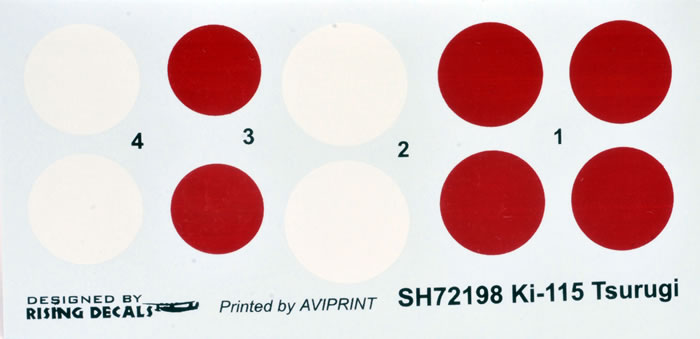
SH72199 – Nakajima Ki-115 Tsurugi "Battle of Tokyo" Markings
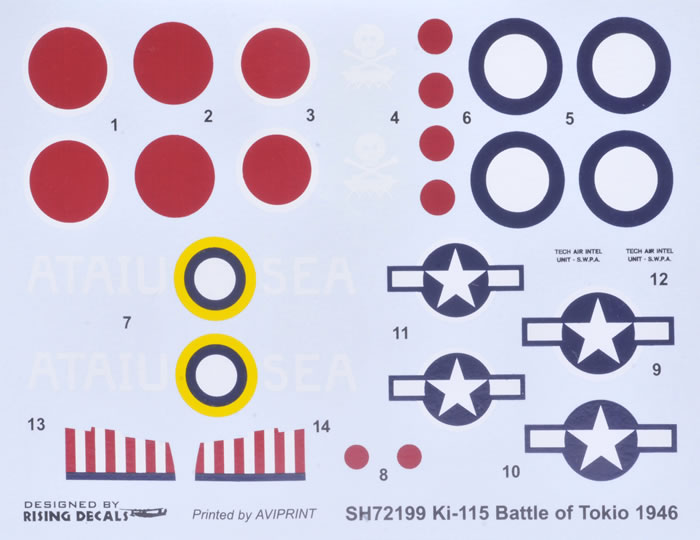
The decals for both boxings are designed by Rising Decals and printed by Aviprint. Registration is good.
Both of Special Hobby's 1/72 scale Ki-115 Tsurugis are well detailed, cleanly moulded, feature subtle surface features, make effective use of resin and photo-etch and if you have a few kits under your belt you won't have much trouble with the absence of locating pins.
Just take your time aligning parts, test-fit frequently, and you'll have an attractive result.
Recommended.
Thanks to Special Hobby for the review sample.
Review Text and Images Copyright © 2017 by Brett Green
Page Created 2 August, 2017
Last updated
3 August, 2017
Back to HyperScale Main Page
Back to Reviews Page |
